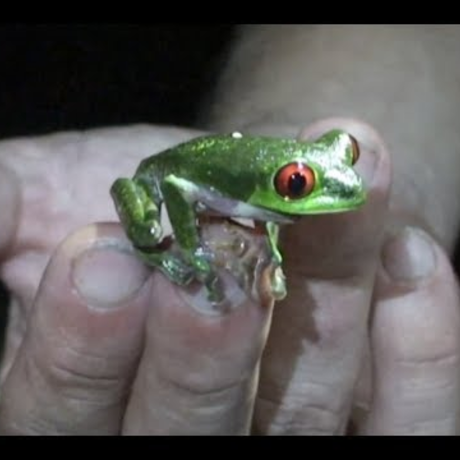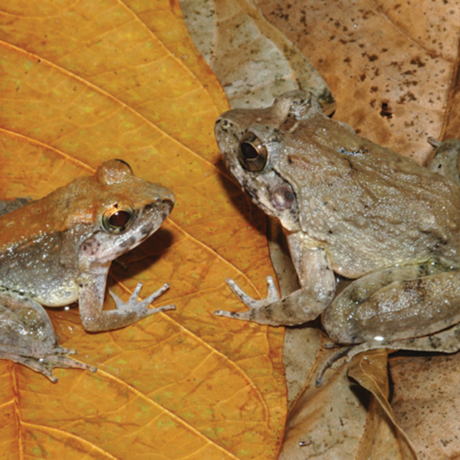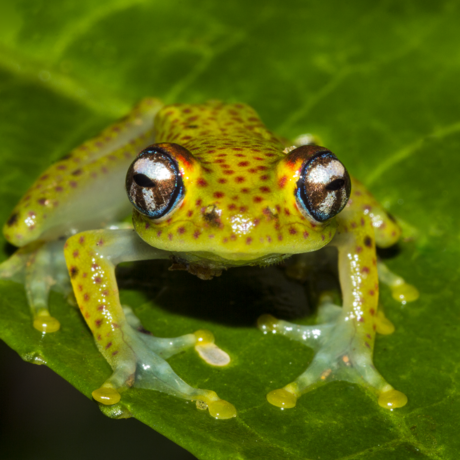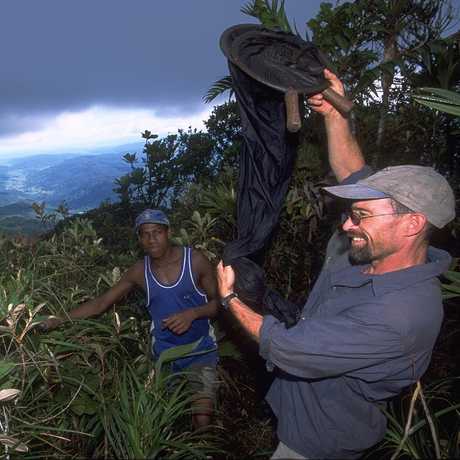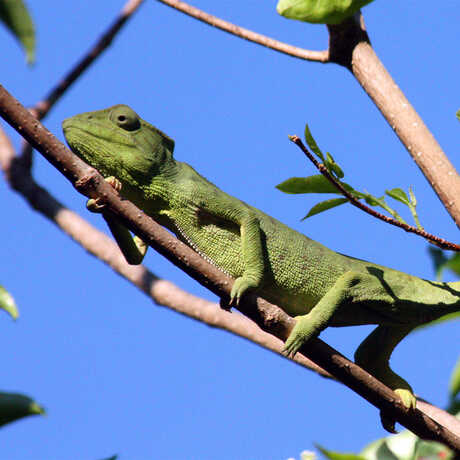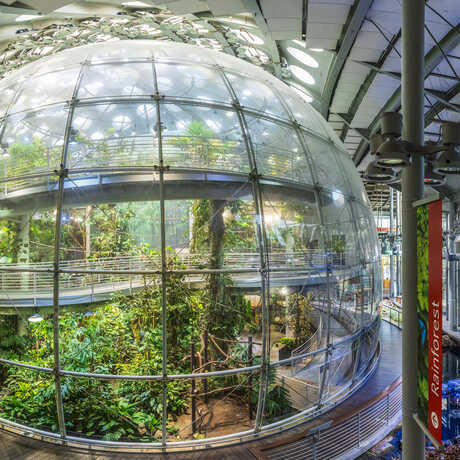Golden Mantella
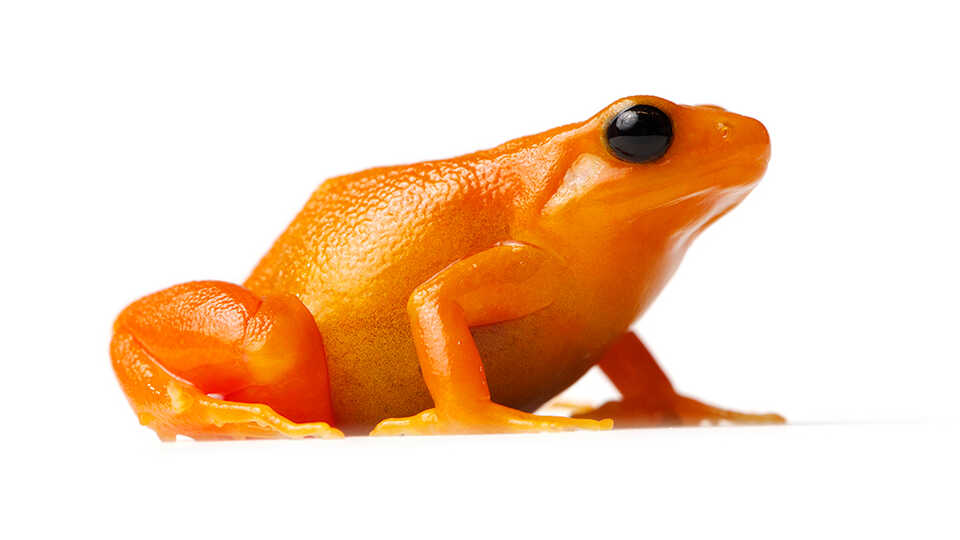
Please note: This animal is not currently on exhibit.
Like all mantellas, Madagascar's tiny, bright-orange golden mantella secretes highly toxic chemicals that often prove deadly (or at the very least distasteful) to predators. Until recently, the question of how these frogs actually acquired their toxins was something of a mystery—one Academy entomologist Brian Fisher solved by examining their diet. The answer was a surprising one: the mandellas were eating toxic ants.
Mantellas are active during the day, when potential predators can easily see their warning coloration, but this highlight effective strategy relies on continued access to poisonous ants—something that human activity is making it harder and harder for them to do. The evidence? Scientists have found that mantella frogs in degraded areas are now less poisonous than their counterparts in pristine forests, making them more vulnerable to predators.
“People often ask me why ants matter,” says Fisher. “This relationship between Madagascar’s toxic ants and toxic frogs is just one of the reasons. Without the right ants, these beautiful frogs could be decimated by predation. In many ways, ants are the glue that holds an ecosystem together.”
Range and Conservation
Golden mantellas (Mantella aurantiaca) live only on the island of Madagascar, where they prefer damp, swampy forest habitats. Critically endangered in the wild, their range is now limited to an area of about 10 square kilometers.
At the Academy
Keep your eyes peeled for both tadpoles and adults when you visit the Academy—biologists are working to breed these frogs in captivity to help ensure the survival of the species.
A Gauge of Ecosystem Health
Like all frogs, mantellas can “drink” through their skin, soaking up water without ever opening their mouths. This special talent makes them especially vulnerable whenever water conditions change; in fact, scientists often use frogs to measure the overall health of an ecosystem, since they're some of the first animals to respond to pollutants.
Sticky Feet
Most frogs have webbed feet to help them swim, but because mantellas spend their lives crawling around on land, webbing wouldn't be much help. Instead, adhesive discs on mantellas' toes help them keep their footing, even on slippery leaf litter.
Daily, 10 am – 4:45 pm
Thursdays during NightLife, the rainforest is open until 7:45.
The rainforest opens half an hour after the rest of the museum Monday through Saturday.
